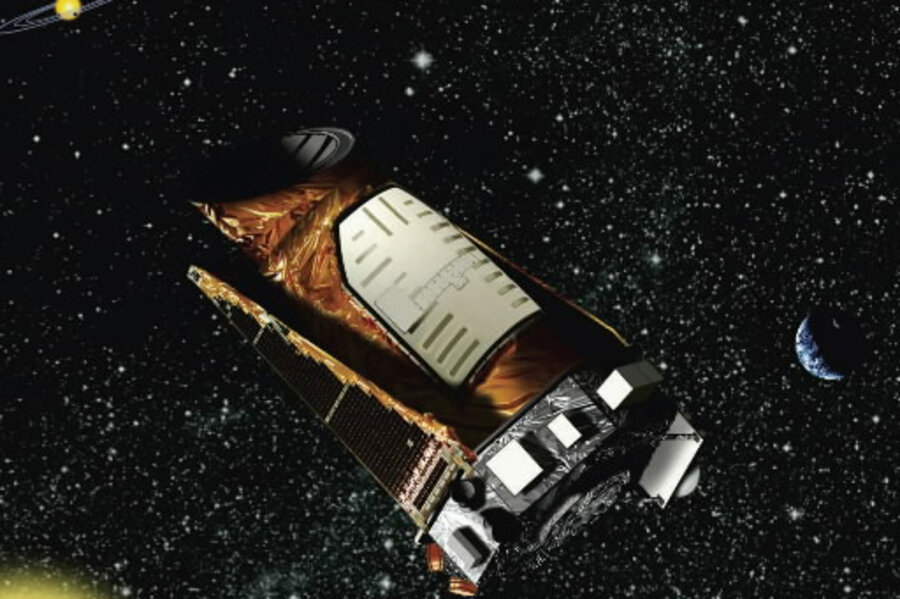Did Kepler telescope really pick up evidence of 'alien megastructures'?
Loading...
The scientists are not saying the "peculiar" activity they observed around a distant star is not aliens.
“We’d never seen anything like this star,” says Tabetha Boyajian, a postdoc at Yale in an interview with The Atlantic. “It was really weird. We thought it might be bad data or movement on the spacecraft, but everything checked out.”
For now, the best guess from the group of crowd-sourced space researchers is that they have spotted an enormous cloud of comets going around a distant star, based on four years of data gathered by NASA's Kepler space telescope.
The telescope dutifully captured the same span of deep space from 2009 to 2013, on the lookout for planets like ours. It did this by pointing at more than a hundred thousand stars and watching for dips in brightness. Many factors can contribute to dimming. For instance, a star may appear to give off less light if it has planets orbiting it, because they can cause a detectable difference in brightness when viewed from Earth simply by passing in front of the star. Astronomers can extrapolate on fluctuations in brightness to determine things like the size and speed of the planet.
The majority of data collected by Kepler is run through algorithms that seek for repeating patterns, but a website called Planet Hunters invites citizen scientists to inspect the data "by eye" and try to find anything unusual. It was those volunteers that spotted the unusual star, which has been dubbed KIC 8462852, in what the researchers describe in a paper as a "serendipitous discovery."
The star in question has unusually high variations and frequent intervals of fluctuating brightness.
According to New Scientist, KIC 8462852 is about fifty percent larger than Earth's sun, and hotter and brighter. At 1,500 light-years away it appears too faint to see with the naked eye.
Aided by observations from Earth, the team was able to rule out variability from the star itself or interference from nearby stars, and concluded the star must be covered by "dust clumps" of unknown origins.
Again working through scenarios, the team concluded the most likely explanation is a group of exocomets that came close enough to the star to be broken up by its gravity, creating vast amounts of dust and gas as a result. According to New Scientist, "if the comets are on an eccentric orbit passing in front of the star every 700 days or so, further breaking up and spreading out as they go, that could explain all the dips in the data."
Dr. Boyajian was not satisfied with all the "ifs" in her team's conclusions, and showed the research to Jason Wright, an astronomer from Penn State University who studies exoplanets and has dug into Kepler data for evidence of advanced alien civilizations.
Professor Wright will soon publish his own conclusions of the data Boyajian showed him. Wright and his co-authors say the unusual star’s light pattern is consistent with a “swarm of megastructures,” perhaps stellar-light collectors, technology designed to catch energy from the star, Slate reports.
“When [Boyajian] showed me the data, I was fascinated by how crazy it looked,” Wright told The Atlantic. “Aliens should always be the very last hypothesis you consider, but this looked like something you would expect an alien civilization to build."
That hypothesis is quite the long shot, but any possibility of finding evidence of civilized life is enough to warrant further research.
Kepler stopped working in 2013, so the Planet Hunters team has not been able to keep up with the star as they would like. But that may not matter.
Boyajian is now working with Wright and Andrew Siemion, the Director of the SETI Research Center at the University of California, Berkeley. The new team of three is writing a proposal to point a massive radio dish at the mysterious star, in search of radio waves at frequencies that may only increase the sense of mystery. If activity is detected, what could be out there?






